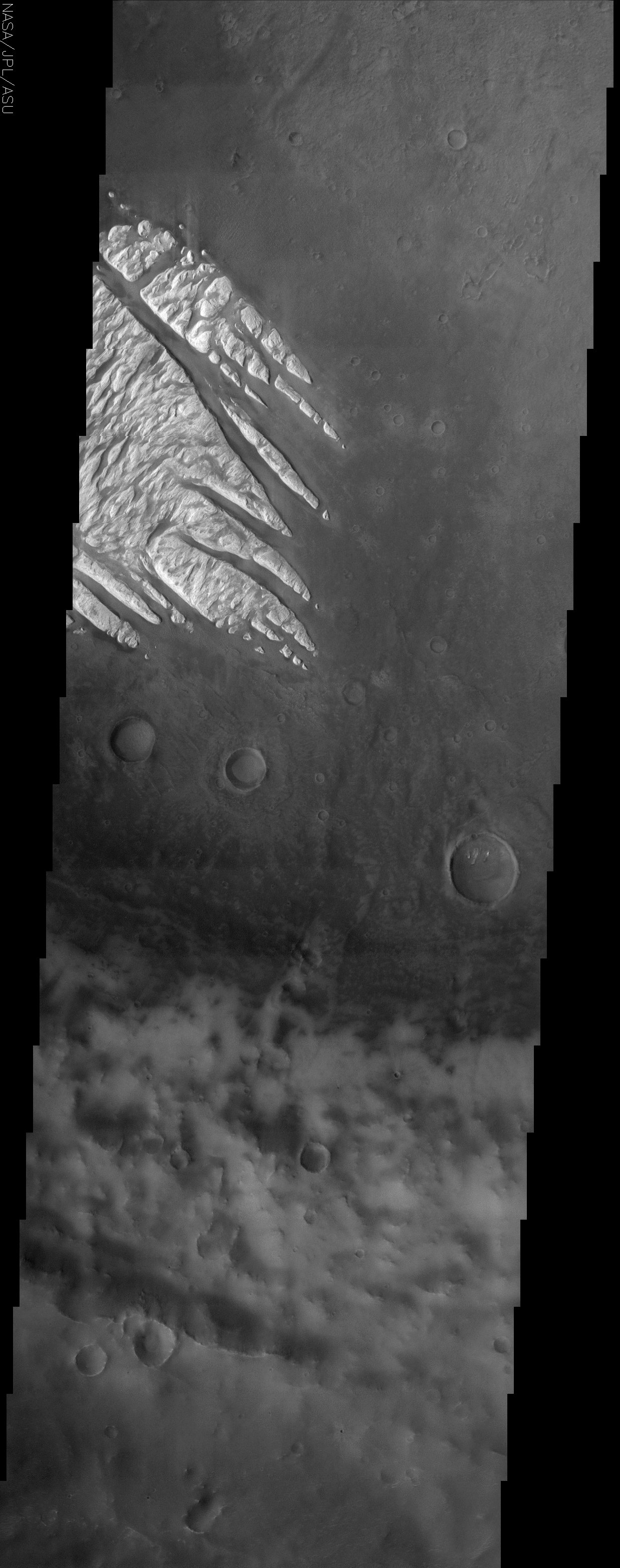
Copyright:
原文:
What caused this unusual light rock formation on Mars? Intrigued by the possibility that they could be salt deposits left over as an ancient lakebed dried-up, detailed studies of these fingers now indicate a more mundane possibility: volcanic ash. Studying the exact color of the formation indicated the possible volcanic origin. The light material appears to have eroded away from surrounding area, indicating a very low-density substance. The stark contrast between the rocks and the surrounding sand is compounded by the unusual darkness of the sand. The featured picture was taken with the Thermal Emission Imaging System on the Mars Odyssey, the longest serving spacecraft currently orbiting Mars. The image spans about 10 kilometers inside a larger crater.
中文翻譯:
📸 最近在火星上發現的這個不尋常的光色岩石構造引起了許多人的好奇!科學家們最初推測這可能是古老湖床乾涸後留下的鹽沉積物,但詳細的研究顯示,這更可能是火山灰所造成的。
透過研究這個岩石的精確顏色,專家們推斷出其可能的火山起源。這些淺色物質似乎從周圍區域侵蝕而來,顯示出其密度非常低。這個岩石和周遭沙土之間的鮮明對比,加上沙子的異常黑暗,更加強了這個異常現象的顯眼性。
這幅圖片是由「火星奧德賽」號的熱發射成像系統拍攝的,該飛船是目前環繞火星運行時間最長的航天器,圖像跨越了大約10公里的範圍,位於一個更大的隕石坑內。
#火星 #火山 #地質學 #NASA #Mars #火星奧德賽 #過往湖床 #火星探索 #科學 #宇宙探索
來源:NASA每日圖片


